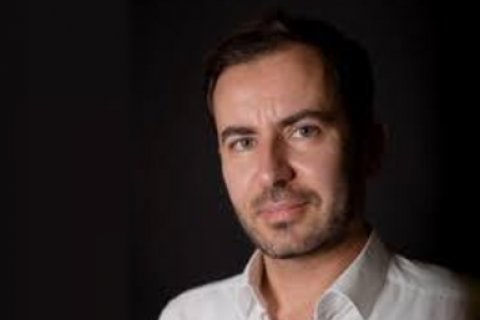We ought to bring diversity into the university both physically and mentally

Dr Ozan Ozavci (History and Art History), wrote an article for the DUB about the stark underrepresentation of non-white and non-western professors at the Utrecht University. Women are underrepresented as well, as professors as well as in organisational functions. He pleas for a top to bottom change of the university to bring diversity to the Utrecht University.
By Dr Ozan Ozavci
A few weeks ago, I came across a news item on The New York Times about the prominent Afro-American Harvard philosopher Cornel West, who had held a tenured position at Harvard but had his new application denied, a story that has sparked lively debates in the United States about the underrepresentation of minorities in tenured positions at universities. In another part of the world, it’s made me wonder how many non-white scholars hold tenured positions at our Utrecht University (UU). Since it is illegal in the Netherlands to record the ethnic origins of the employees, such data isn’t readily accessible.

What I did instead, therefore, was a small exercise. I went through the profiles of professors (hoogleraar) across the faculties of UU one Sunday morning to see who is in a position of influence here. Based solely on photos and names available on the university website, I tried to make a rough estimate over how many of these are non-white scholars or scholars with non-western origins. I must admit that the data I gathered would not entirely reflect accurate numbers and must be read with a pinch of salt. Even then, the figures are staggering.
Two percent with non-white or non-western background
According to the UU website, of 685 professors (hoogleraar) working in various capacities here, only fourteen appear to be of non-white or non-western background. This amounts to 2 percent of the entire group. Among these, only four of them are females. In some faculties, there seem to be no professors with minority origins. The figures mirror the situation in the administration of the faculties, which are almost purely populated by native and white Dutch, and predominantly by male scholars.
But what exactly do these ostensible figures tell us? As a tenured scholar with an originally non-western background, by writing about them, I don’t mean to unempathetically vilify the existing situation at UU nor blame or offend anyone. Let me say this first: there are manifold and complex factors behind these figures, which go beyond racial and gender discrimination and invalidation. It’s true that, in a country like the Netherlands, where nearly 75 percent of the population consists of native and white Dutch people, the pool of minorities that tend to pursue an academic career is small. In fact, one can quickly observe on the website of the UU that there are many more non-white scholars or scholars with non-western/immigrant background in the ranks of doctoral candidates, postdoctoral researchers, lecturers, or assistant and associate professors. That said, they are still starkly underrepresented.
Longstanding societal inequalities
This is in some ways comparable to and intertwined with the situation of women in Dutch academia. Women also have been underrepresented in professorial positions as well as in the administration of universities. Today only 24 percent of all professors in the Netherlands are female. But these figures have been changing towards parity thanks to positive discrimination such as enabling research funding programmes (e.g. NWO’s Aspasia) aimed at women and greater attention for gender equality in the appointments to administrative positions.
Like in the situation of women, minority scholars have also long felt themselves as being disadvantaged by longstanding societal inequalities and their grim reflections on universities. The experiences of Uğur Ümit Üngör, a Dutch colleague with an immigrant background who recently left UU, are particularly pertinent here. In a recent blogpost, Üngör writes that in the Netherlands, minority university staff and students “are often underestimated, socially excluded or suffer various forms of (micro-)aggression, invalidation, and intellectual disparagement.” Consequently, they are usually “on guard when they enter Dutch academic space and dissimulate to blend in.” One of the very few minority emeritus professors at UU, Gloria Wekker, has also been publishing about these issues for some time.
I personally find their observations not too difficult to recognise. More often than not have my Dutch colleagues spoken right next to me about how “uncivilised” the country I am originally from was, or others would sometimes ask me awkward questions like “are there any archives in Turkey?” More often than not, you would find at different departments, minority scholars who have never been entrusted with administrative tasks (one of the prerequisites for a professorship in the Netherlands) despite holding tenured positions for years.
Unintended inability
Internationalisation and gender-equality are, of course, crucial, and a lot needs to be done on both fronts. But, here at UU, we need to embrace diversity in the broader sense of the word, taking into account the inclusion of people with different ethnic, racial and social backgrounds—something that still needs further improvement here as in other Dutch universities.
Even though the recent UU events to foster diversity are all very heartening, I still can’t help doubting if they’d suffice for discerning and acting upon the fundamental correlation between the Black Lives Matter movement and the empty seats at Jack Glaser’s seminar on racial profiling, or between Cornel West’s frustration at Harvard and the professorial demographics at UU.
If I may be a little blunt, the link that connects them all seems to be an unintended inability—a certain oversight in recognising and positioning oneself against something that no statistics can lengthily document and nobody but its sufferers can truly see. It’s those undesirable, everyday experiences of minorities Üngör speaks of and many among us endure.
What can we do?
This is why we ought to do more than listen to and acknowledge the problems of minorities through the manifold events we organise. For genuine inclusion, for seeing through invisible issues, and to be able to solve them, we ought to invest in our future, act now, and let those who confront these issues daily be the decision-makers. We ought to enable their reach to positions of influence.
To this end, seats can be reserved for self-identified minority scholars at administrative positions. More research funding opportunities, specifically targeting them, can be generated. More minority scholars can be invited to hiring committees and research/teaching funding evaluation commissions. And we can look into possibilities for ensuring the admission of more students from underrepresented backgrounds.
Mindfulness for diversity, equality and inclusion ought to be fostered not only in lecture halls and course curriculums. We can also include discrimination-sensitive content into the basic and senior teaching qualification (BKO and SKO) programmes.
In short, we ought to bring diversity into the university both physically and mentally by changing not only the scene but also the substance, from top to bottom, i.e. by diversifying at once the ethno-racial and gender profile of the boardrooms of faculties, globally-focused funding and research institutions (such as the UGlobe or Institutions for Open Societies), training programmes, clusters, classrooms, reading lists, and even core teams of Gender and Diversity hubs.
Otherwise, all that has been done in the name of diversity lately might be limited to paying lip service or window-dressing in the wake of tragic events such as George Floyd’s death. For equality and inclusion, yes, dialogue is key. This is obvious. But more needs to be done. It’s now time to walk the talk.

